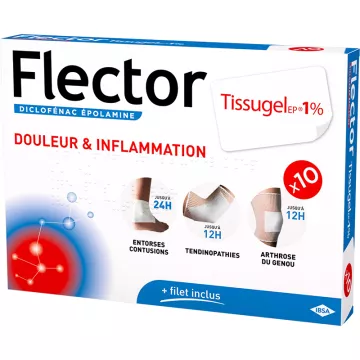Joint pain is common (1 in 3 French people), especially as we age, where it is often attributed to osteoarthritis, but careful investigation is always needed to identify the cause.
No medication will be delivered outside France. Only available for collection from the pharmacy in Perpignan (France).
Soin-et-nature.com, your ARS-approved organic pharmacy, offers you the opportunity to buy your joint pain medication online. Give your opinion on your purchase experience in your online organic pharmacy with our partner Verified Reviews.
More details

With around 400 joints, the human body is a mobile, flexible machine that generally remains well-oiled until the late fifties. From this age onwards, joints suffer the consequences of aging, in particular the degradation of cartilage and the hardening of certain arterial tissues.
It's important to remember that joints, which are the points of union between the various bones in the body, are complex structures containing a variety of tissues: connective (support) tissue, cartilage, membranes, fluid (synovial fluid), ligaments...
These are the most common types of pain in humans, whether acute or chronic, resulting from inflammation or trauma. They affect everyone, from athletes to the sedentary, from young children to the elderly. Depending on age, who hasn't experienced torticollis, lumbago, sprains, muscle cramps, rheumatism or osteoarthritis?
Every joint is made up of interrelated and interdependent elements.
Joint pain is pain linked to damage to one of thejoint 's components: the cartilage (the slippery tissue that covers the surfaces in contact with the bones of a joint), thebone beneath the cartilage (subchondral bone), the joint capsule (the membrane that envelops the joint), the synovial membrane (the lining that lines the inside of the capsule and secretes synovial fluid), the meniscus-like structures in certain joints, and the ligaments that connect the muscles to the bones.
In general, joint pain is triggered by movement, including gentle, passive movement (without muscle contraction) of the joint. In some cases (fracture, osteitis), the pain may even restrict this passive movement. Care must therefore be taken to ensure that the muscles are completely relaxed, so as to eliminate any reawakening of pain which would otherwise be of muscular or tendinous origin (during reflex muscle contraction).
Painkillers, also known as analgesics, are used to combat pain. Those that act on the site of osteoarthritis pain, i.e. the joint, are called peripheral analgesics. Certain low-dose non-steroidal anti-inflammatory drugs can also be used for their pain-relieving action.
Others act on the way pain is perceived in the brain. These are known as central analgesics (tramadol, low-dose codeine, etc.). They are superior in action to the above-mentioned drugs, and should only be used if peripheral analgesics have failed to relieve the pain.
Strong" central analgesics are very rarely needed in osteoarthritis. If the doctor prescribes them, he or she will do so according to very strict rules of use.
Ibuprofen (Advil, Motrin, private labels) and naproxen (Aleve, private labels) are two non-steroidal anti-inflammatory drugs (NSAIDs) available without prescription. As well as reducing pain like acetaminophen, they also act on inflammation (swelling). They are a good choice for relieving the symptoms of RA and osteoarthritis.
NSAIDs can be irritating to the stomach, so it's important to always take them with food, and never exceed the recommended dose and frequency. NSAIDs may not be suitable for some people (including those with heart disease, digestive problems or kidney failure). Therefore, if you have health problems, check with your pharmacist or physician before taking them.
Topical NSAIDs can also be used to relieve osteoarthritis, depending on the area affected. Diclofenac gel (Voltaren emulgel®) is available without prescription. It reduces pain and inflammation locally and is poorly absorbed into the bloodstream, which means it has fewer side effects and contraindications than oral NSAIDs. However, it is important to discuss its use with your healthcare professional.
Physical activity is the cornerstone of osteoarthritis management, and complements that of RA. The simple act of moving the affected joint brings benefits in terms of reduced pain and increased mobility. When exercise is accompanied by weight loss, the benefits are even greater, since a reduced load on the affected joint - the knee, for example - reduces osteoarthritis symptoms.
Heat therapy can help relieve pain. We recommend applying a warm compress (e.g. a "magic" bag or hot-water bottle) to the sore area for 10 to 15 minutes, repeating every 1 to 2 hours for a few days. A hot bath can also bring some relief. Before applying heat, make sure you have no contraindications to this therapy by consulting a health professional.
Various "cognitive" techniques can be used to break the pain cycle. Muscle relaxation exercises, for example, help to make certain movements less painful and easier to perform, while relaxation exercises help to reduce pain-related stress levels.
Finally, it's important to combat fatigue, one of the symptoms of chronic pain. If you have trouble sleeping, talk to your pharmacist. He or she can give you advice on how to improve your sleep hygiene and ensure that your medication is properly adapted to relieve pain at night.
Soin-et-Nature offers you a complete selection of medicines to effectively treat pain and fever: